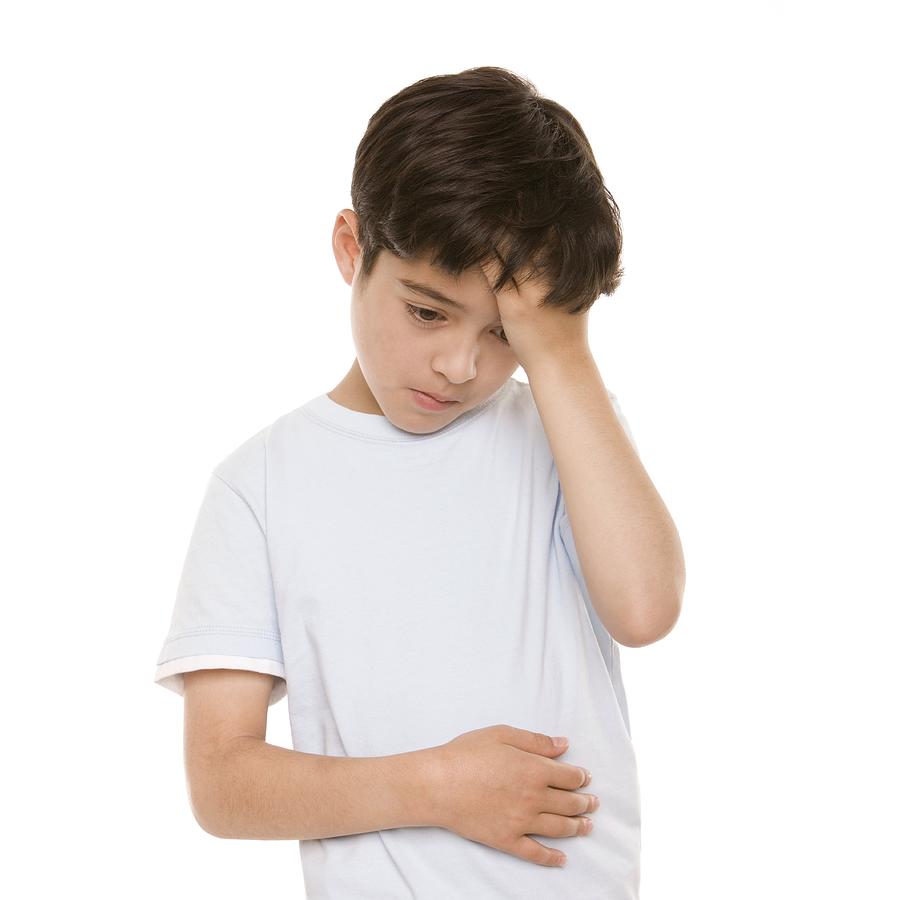Appendicitis is an inflammation of the appendix, an extension of the colon located on the lower right side of the abdomen. In cases when the appendix gets obstructed, it will get inflamed and eventually infected due to a bacterial overgrowth. Appendicitis is a medical emergency which requires urgent medical attention, as if left untreated it can get perforated and the infection will spread to the abdominal cavity, which is a very serious and life-threatening medical condition. Is your child complaining of severe abdominal pain? Could it be appendicitis? Find out everything you need to know about appendicitis in kids.

What Are the Signs of Appendicitis in Children?
Common signs and symptoms of appendicitis in children are:
- Abdominal pain which usually starts around the belly button and moves to the lower right side of the abdomen. The pain tends to increase in severity as time passes. It tends to get worse while moving, coughing, sneezing or touching the stomach. In cases of an appendix rupture, the pain will spread into the entire abdomen.
- Nausea and vomiting
- Fever
- Chills
- Loss of appetite
- Diarrhea or constipation
- Mood changes
When to See a Doctor
If you think that your child has appendicitis, you should seek immediate medical help and get the right diagnosis and treatment. As mentioned, appendicitis is a serious medical condition. Sometimes, it just takes hours for an irritated appendix to get inflamed and even rupture, leading to peritonitis. Peritonitis is an infection of the other abdominal organs inside the abdominal cavity, a life-threatening condition. If the diagnosis is delayed, the treatment of appendicitis and especially of a ruptured appendicitis can be difficult.
How Is Appendicitis Diagnosed?
When diagnosing a medical condition, detailed anamnesis and physical examination are necessary. Other diagnostic procedures needed when appendicitis in kids is suspected include:
- Blood tests which will reveal the presence of an infection in the human body and even determine any other problems with abdominal organs such as pancreas or liver
- Urinalysis which helps reveal a urinary infection. Sometimes, urinary infections can mimic the signs and symptoms of an irritated or inflamed appendix.
- Abdominal ultrasound which is perhaps the best examination available in cases of appendicitis. With the help of high-frequency sound waves, the internal organs and their functioning are examined.
- CT-scan of the abdomen which is an even detailed examination of the abdomen. It uses a combination of X-rays and computed technology.
How Is Appendicitis in Kids Treated?
In general, the treatment of appendicitis depends on the signs and symptoms that your child is having, age and overall health. As it is a medical emergency in cases when an appendix gets irritated or inflamed, a surgical removal of appendicitis is common, a procedure referred to as appendectomy. There are two surgical options available:
- Open surgery – also commonly referred to as traditional surgery, which consists of opening the abdomen through a small incision in the lower right side of the abdomen under general anesthesia. Once the appendix is located, it is surgically removed by the surgeon. In cases of a ruptured appendix, a small draining tube is placed in order to drain any pus or fluids from the abdominal cavity. The surgeon may recommend IV antibiotics for your child in order to treat the infection first, if the health of your child is stable. Once the infection is treated, this drain or shunt is removed.
- Laparoscopic surgery – which consists in making small incisions in the abdomen through which the surgical instruments and laparoscope are inserted. In cases of a ruptured appendix, this surgical procedure is not an option. Laparoscopic surgery also requires general anesthesia.
Recovery After Surgery
After the surgery of appendicitis in kids, your child is not allowed to eat or drink anything so his/her intestines have enough time to heal. During this period, your child will receive IV fluids. Medications that ease the pain and antibiotics are often given. After a couple of days, your child will be able to start drinking liquids such as water or apple juice and gradually move to solid foods.
If your child’s appendix has ruptured, normally it will take more time to heal. This also means that your child will spend more time in the hospital.
Once your child is able to go home, your healthcare provider will limit the physical activity for a few weeks. Contact sports or lifting heavy things are not allowed for a couple of weeks following the surgery until the surgical wound heals completely. If your child has a drain after leaving the hospital, you should not shower or bathe your child. Going swimming is also not allowed until the drain is removed.
